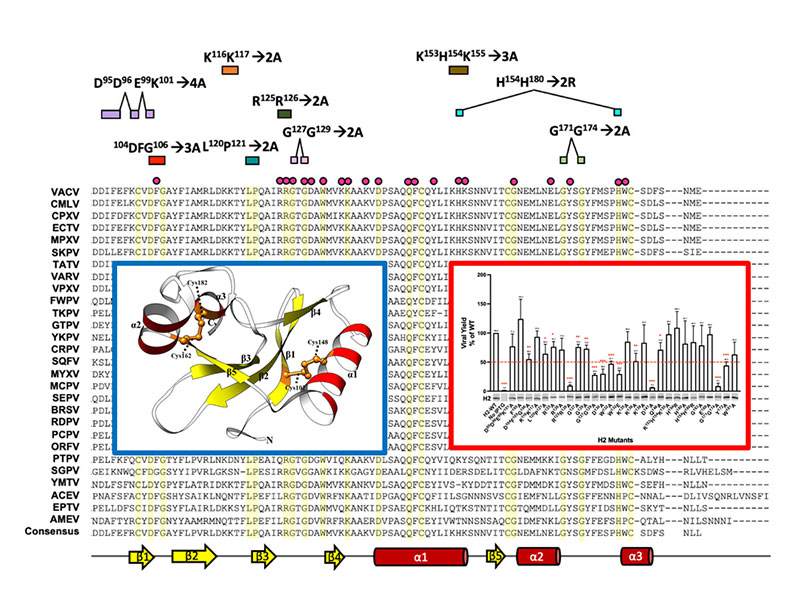Structural and functional analyses of viral H2 protein of the vaccinia virus entry fusion complex
Dr. Chang, Wen - November, 2023
Virus-mediated membrane fusion involves conformational changes of the viral fusion protein to fuse the opposing viral and host lipid bilayers. Unlike all other known viruses that contain a single fusion protein, poxviruses harbor a multimeric protein complex of 11 subunits, termed the entry fusion complex (EFC), to mediate fusion with host membranes. Yet, how the poxviral EFC mediates membrane fusion remains enigmatic. To establish the mechanism of EFC-triggered membrane fusion, we are deciphering the structure and function of individual EFC components. Here, we determined the crystal structure of the H2 ectodomain by X-ray diffraction, revealing a folded conformation comprising a central five-stranded β-sheet and three cladding α-helices. We reconstructed the full-length H2 by in silico prediction, revealing that the N-terminal region (amino acids 51–90) of H2 protein may fold as a long helix connecting the ectodomain and transmembrane region. Using alanine-mutagenesis screening in a transient complementation system, coimmunoprecipitation, isothermal titration calorimetry, and mature virion (MV)-triggered membrane fusion assays, we concluded that the surface of the ectodomain of H2 protein, including two loop regions, 170LGYSG174 and 125RRGTGDAW132, constitutes a broad A28-binding region. Moreover, although not involved in A28 binding, the N-terminal helical region approximal to the transmembrane part, encompassing 64RIK66, 72W, and 83ESDRGR88, is also crucial for viral EFC formation and MV infectivity.
